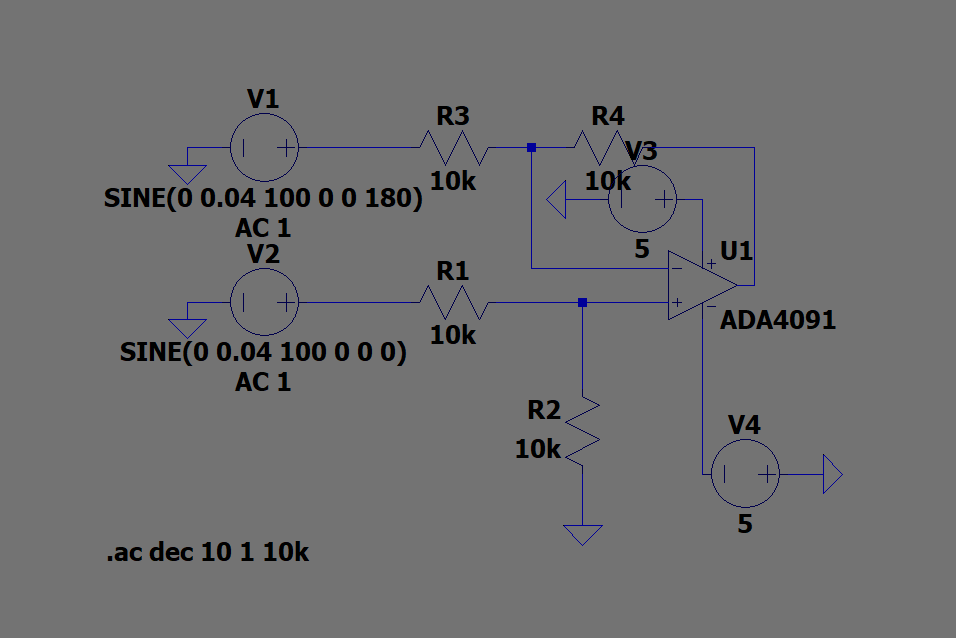Followup to this question.
I have an instrumentation amplifier.
When conducting an AC Sweep, this is the response.

There are two issues with this. Firstly, the signal magnitude is far too low. Secondly, the signal somehow grows on higher frequencies.
I lack any reactive passive components and reactance of the op-amp used (the ADA4091) is not significant until exceeding 100kHz. If there is a parameter in the op-amps that would affect this, I am unaware of it.
Bode plot with PR8 and PR9 included, points within the Instrumentation Amplifier.
Addendum: The input voltages (V17 and V20) are offset by +2.5V. Unfortunately Multisim does not display that properly. Thank you to Andy aka for reminding me to specify that.
Addendum 2: I've isolated the issue to the latter half of the circuit, as disconnecting the two shows that the first half acts within reason with a magnitude of around -1dB for an AC Sweep, while the latter half still has a -100dB loss.
Based on suggestions that Multisim is not as commonly used, I simulated the latter half of this circuit (which is just a differential amplifier) in LTSpice. I removed all offsets and provided a +5V and -5V voltages as inputs.
The AC Sweep remains unsatisfactory despite a reasonable transient response.
One thing of note is that the power source powering the Op-Amp (An ADA4091) is returning the following response in AC Sweeps:
The LTSpice simulation file in question: https://ufile.io/640sx0l3 (I can put it somewhere else if this site is not too familiar with ufile)
Addendum 3: Other things attempted include
- Changing values and ratio of resistor. Changing values of resistor while maintaining ratio did not improve magnitude. Increasing gain of system with resistor ratio changes did improve the magnitude to an extent in the AC Sweep (I was able to get -20dB) but due to application issues, the gain of the diff. amplifier cannot be over 20.
Change input voltage to 5V and -5V. No change observed.
Change input voltage to it's own loop. This improve the magnitude greatly, but the output voltage became dependent on the voltage source, which varied significantly.
Change input offset from 2.5V to 0V. This had no effect.
Attempt to switch to 2-opamp Instrument Amplifier circuit. Magnitude was similarly low.














